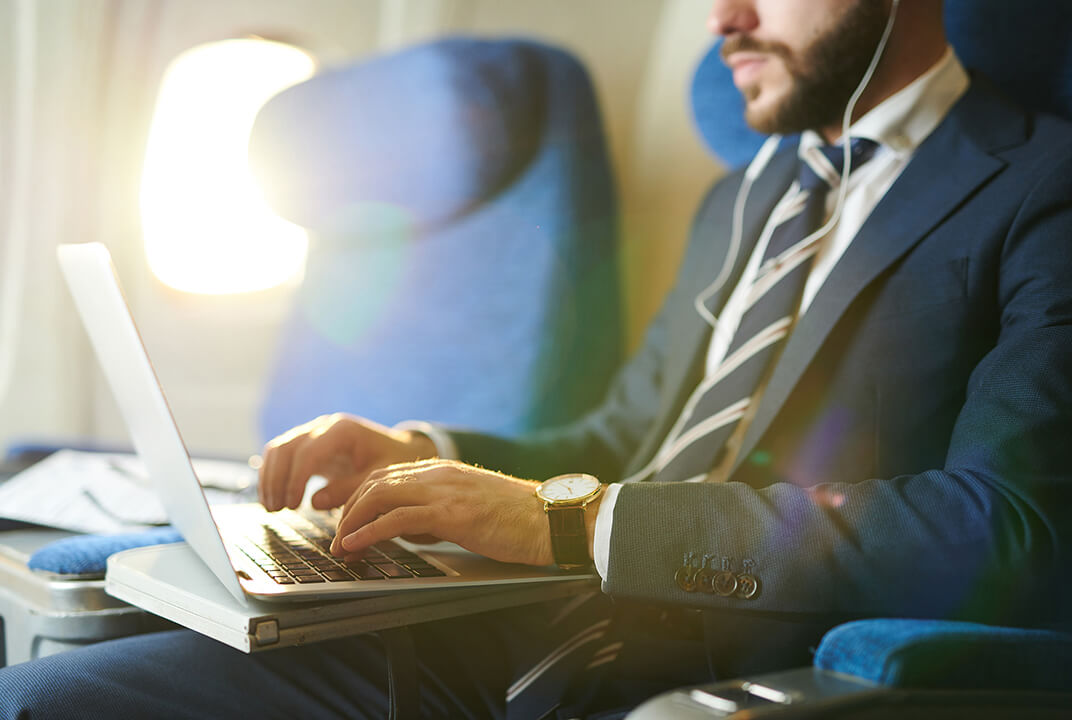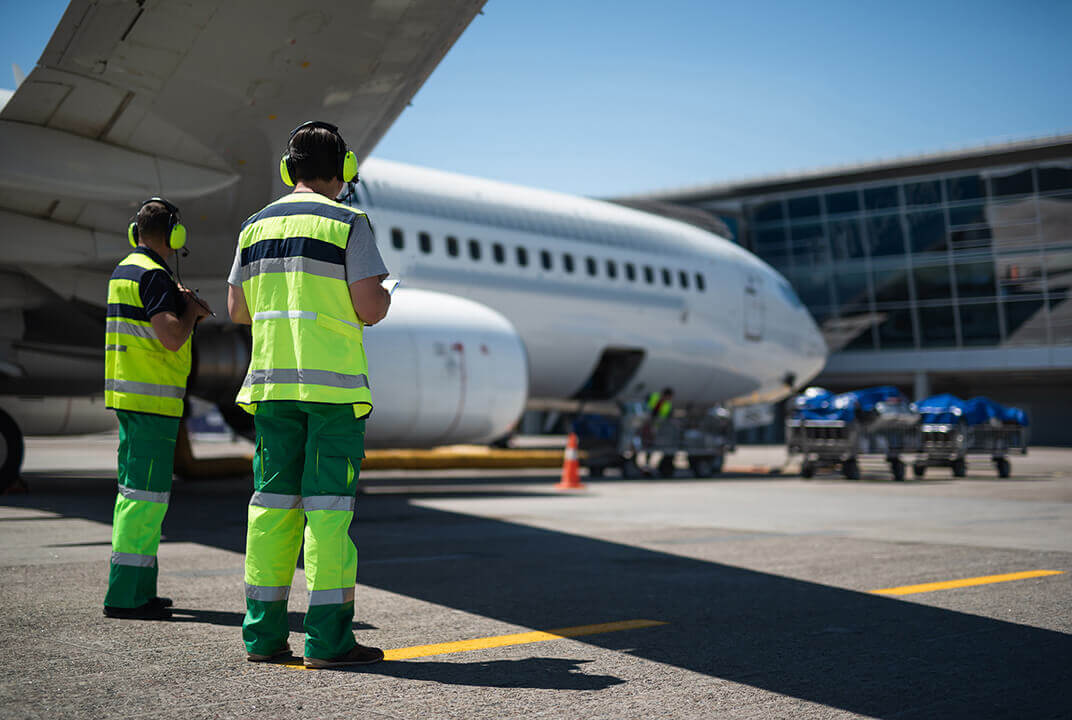Insight | 2017 - the year in aviation
2017 - the year in aviation
null
It’s been a pivotal year for aviation – the industry’s connectivity revolution is finally underway. Here’s your annual debrief.
2017 has been a turbulent year, from Monarch’s collapse to President Trump’s travel ban, but also an encouraging one, with increased profits, airline innovation and the rise of inflight broadband all moving the needle. This is your annual debrief – the year in aviation – let’s take a look.
January
We kick off 2017 in an optimistic mood – as these stats show.
- Airlines are expected to take delivery of some 1700 new aircraft, around half of which will replace older and less fuel-efficient ones. This will expand the global commercial fleet by 3.6% to 28,700.
- The average return airfare for 2017 is expected to be $351, 63% cheaper than the average in 1995.
- The global spend on tourism enabled by air transport is expected to grow by 5.1% in 2017 to $681bn. And airlines are expected to operate 38.4 million flights in 2017, up 4.9%.
Meanwhile, British Airways decides to cut its complimentary food service on short-haul flights in favour of selling a new M&S F&B range on board.
American Airlines chooses the ‘no seatback entertainment’ option on 100 new Boeing 737 MAX on order as part of its inflight connectivity strategy. 90% of AA fliers use their own phone, tablet or laptop.
And President Trump issues a sweeping executive order – the ‘Trump travel ban’ – barring anyone arriving from Iran, Iraq, Libya, Somalia, Sudan, Syria and Yemen from entering the United States for 90 days.
February
A US court puts President Trump’s travel ban on hold.
Ryanair presents a “cautious” outlook for the remainder of its 2017 fiscal year, as a result of Brexit uncertainty, and continues to slash fares to try and stimulate demand.
But it’s not all doom and gloom. Some airlines are innovating…
… Qatar Airways takes the record for the world’s longest non-stop commercial flight as it touches down in Auckland, from Doha, after 16 hours and 23 minutes in the air.
… Lufthansa partners with Nespresso to offer passengers quality coffee at the gate.
… Philippine Airlines switches from being an ultra-high-density all-economy long-haul carrier, on its Airbus A330-300, to using a three-class layout.
While other airlines are growing…
… At its full-year financial results conference, IAG reveals Aer Lingus is emerging as the shining star within its stable of airlines – the airline’s full-year operating profit grew by 89.6%.
March
Inmarsat releases a study, by aviation consultant Helios, that shows satcom has saved the airline industry a staggering $3bn over the last 15 years:
- $1.1bn saved by improved air traffic control of connected aircraft
- $1.9bn by operational efficiencies
The UK bans any device larger than a smartphone in plane cabins travelling from six Middle Eastern countries; Turkey, Lebanon, Jordan, Egypt, Tunisia and Saudi Arabia.
Emirates give business class cabin crew new ‘Meal Ordering Devices’ – smart phones installed with an Emirates meal ordering app – to make passenger experience more personal.
Boeing’s newest, largest Dreamliner, the 787-10, successfully makes its first flight – and will be available in 2018, following a test program.
April
Lufthansa enters commercial service with high-speed inflight broadband, spearheading the connectivity revolution, using Inmarsat’s groundbreaking GX Aviation service.
AIX 2017 – the Aircraft Interiors Expo – brings the industry together. From staggered seats to increased seat width, we see lots of smart design innovation in this space. Miss it? Get a handy debrief on all that happened here.
Also at AIX, AirAsia Group announces it has signed an MoU for an inflight Wi-Fi upgrade, using Inmarsat’s GX Aviation.
Meanwhile, TSA agents at Boston airport, USA, discover a live – yes, LIVE – 20lb lobster in one man’s hand baggage.
Honeywell Aerospace says it sees rising demand for inflight connectivity, predicting installation of more than 1,000 JetWave units by the end of the year. These units allow use of Inmarsat’s trail-blazing GX Aviation connectivity service.
May
Inmarsat successfully launches its new GX satellite with Space X.
Honeywell Aerospace kicks off its Power of Connected world tour, showcasing its services alongside game-changing inflight broadband powered by Inmarsat’s GX Aviation.
Alitalia begins bankruptcy proceedings.
And China hopes to rival Boeing and Airbus with the C919, the first Chinese-built passenger jet.
Qantas unveils a new international lounge in Perth, which includes an outdoor barbecue area. Surprisingly, the first outdoor patio at an airport in Australia.
And the business aviation industry gathers once again, this time at EBACE 2017. Inmarsat drops some tasty news:
June
The world’s largest aviation event – the Paris Airshow – sees over 322,000 people pay it a visit.
At the show, Honeywell Aerospace showcases its ‘Connected Aircraft’ concept. Airbus also announces plans to update its A380 superjumbo and Boeing launches a larger capacity version of its 737 MAX 10.
Qatar Airways wins ‘Airline of the Year’ at the annual World Airline Awards, by Skytrax. Lufthansa claims 7th spot, as well as being crowned ‘Best Airline in Europe’. AirAsia wins the world’s ‘Best Low-Cost Carrier’ award for the ninth year in a row and Emirates receives an award for the world’s best IFE, for the 13th year in a row.
All of the above are current (or soon-to-be) Inmarsat connectivity partners, of course.
Speaking of partners…
… United Airlines commits to evaluating Inmarsat’s SB-S on board four Boeing 767s.
… Qatar Airways intends to adopt Inmarsat’s next-gen GX Aviation inflight broadband service on board more than 130 aircraft.
… and Colombia’s Avianca becomes the first LatAm airline to sign up for GX Aviation.
Inmarsat also successfully launches a new European Aviation Network satellite, bringing the EAN one step closer to going live.
US Supreme Court partially lifts the block on President Trump’s travel ban.
July
60% of passengers consider inflight Wi-Fi a necessity, not a luxury,
45% of passengers would rather pay for good Wi-Fi than be given free IFE and
44% say they’d stop flying with their preferred airline if it offered poor inflight Wi-Fi.
These are some of the stats included in Inmarsat’s global 2017 Passenger Survey, released this month.
Also, it’s a good month for…
… Airlines. A new report from research firm, IdeaWorks, shows that airlines reap $28bn from selling travel ‘extras’ – ancillary revenue – to flyers.
… Finnair, which sees a 100% increase in inflight sales on China flights after implementing real-time payment processing using inflight connectivity.
… Siemens, developer of a battery-powered plane that can fly for 30 minutes. It takes to the skies at the Goodwood Festival of Speed.
August
A good month for innovation…
… Honeywell Aerospace develops new, self-diagnosing Integral Health Monitoring (IHM) proximity sensors, which can detect when a sensor has been damaged. It will improve aircraft system performance and reduce the maintenance costs that come from false readings.
… EasyJet reaffirms its position on sustainable air travel, backing plans to develop battery-powered passenger aircraft. Easyjet CEO, Carolyn McCall, said she was “now confident that such a plane, possibly carrying 220 passengers, would eventually fly.”
… Thomas Cook Airlines launches an Economy Plus fare, including complimentary drinks on board, priority check-in and an extra 4kg of hand luggage.
… London Heathrow takes the top spot in OAG’s annual list of the top 50 international megahubs.
… and British Airways adds Graham’s Six Grapes, the port favoured by Winston Churchill, to its Club World menu. Cheers.
But it’s not all rosy…
… 400,000 passengers have their flights cancelled because Ryanair is hit with a pilot shortage.
… More than 3,000 flights are cancelled because of Hurricane Harvey.
September
The industry gathers for APEX 2017 – the annual Airline Passenger Experience event. Lots of innovations are revealed – from IFE-linked massage chairs to inflight VR headsets and portable wireless IFE.
Among the big announcements is Inmarsat’s ‘Sky High Economics’ report. It highlights, for the first time, the commercial value of connected ancillary revenue:
- Airlines stand to make an additional $30bn through connected ancillaries by 2035
- This will help stimulate an overall global market worth $130bn
- As a result, this will generate an additional $4 per passenger in connected ancillary revenue
These are just some of the findings – find the full report here.
Meanwhile, Ryanair looks to be preparing a takeover bid for Alitalia…
… but, at the end of the month, abandons the bid to focus on its pilot rostering problems.
Inmarsat’s new EAN satellite is confirmed ready for commercial service
More airlines join the connectivity revolution. AirAsia and United Airlines commit to high-speed inflight broadband with Inmarsat’s GX Aviation. It goes live for Air Astana.
The industry once again gathers, this time for the London Aviation Festival, where Inmarsat hosts an expert panel presenting the case for commercialised inflight Wi-Fi. Catch up on it here.
October
It’s not such a good month for…
… Air Berlin. The airline sees its final flight take off this month before closing the aircraft doors forever.
… Monarch. Another low-cost carrier bites the asphalt and 110,000 passengers are left temporarily stranded, prompting the UK’s biggest ever peacetime repatriation.
But a good month for…
… Inmarsat’s Jet ConneX. The broadband service for business jets sees its fastest deployment rate ever.
… Boeing. The aircraft manufacturer now expects to earn $12.5bn (£9.4bn) in 2017, up from its last forecast of $12.25bn.
…champagne-loving Emirates passengers. The world’s largest international airline introduces a Moet & Chandon champagne lounge – created exclusively for Emirates – in its business class lounge at Dubai International Airport.
November
Inmarsat partners with two airlines. Azerbaijan Airlines announces a plan to introduce GX Aviation on board for nose-to-tail Wi-Fi in the sky. Emirates commits to using GX Aviation for game-changing inflight broadband.
The industry gathers for the Dubai Airshow and airlines announce almost $19bn (£14.5bn) worth of orders on the opening day.
Richard Branson’s ‘Baby Boom’ supersonic jet will fly from London to New York in three hours – with the service slated to start from 2025. The first test flight will happen in 2018.
Qatar Airways successfully buys a 9.6% stake in Cathay Pacific.
IAG secures the collapsed Monarch’s old take-off and landing slots at London Gatwick airport, which will primarily be used to boost the frequency of British Airways flights.
Easyjet announces its profits are down and describes 2017 as a “difficult year for the industry.”
Airbus, Rolls-Royce and Siemens announce they are teaming up to develop hybrid electric engine plane tech in a push towards cleaner aviation.
The end of an era: United Airlines retires its iconic Boeing 747 fleet:
The industry gathers for Accelerate: Aviation 2017 to discuss opportunities and issues in an era of change. Among the topics covered is the future of the seatback screen, the transformation of inflight retail and, of course, inflight connectivity. Find your full debrief here.
December
As Wi-Fi in the sky arrives, people seem to enjoy joining the connectivity revolution...
IATA announces that it expects the global airline industry to make a net profit of $29.8bn in 2017.
Inmarsat wins ‘World’s Leading Inflight Internet Service Provider’ at the World Travel Awards 2017.
US Supreme Court allows the enforcement of President Trump’s travel ban while appeals proceed.
Berlin’s Brandenburg Airport is still not finished.
The last word. 2017 has seen many ups and downs but a couple of trends have a clear direction: the anticipated growth in aviation and also the spread of Wi-Fi in the sky. We’re finally seeing airlines adopt inflight broadband solutions en masse. Passengers have made their desires clear. 2018 will reveal how the industry’s digital transformation plays out and just which airlines, suppliers and businesses will lead the way.
Don’t want to get left behind? Start your digital airline transformation now.


